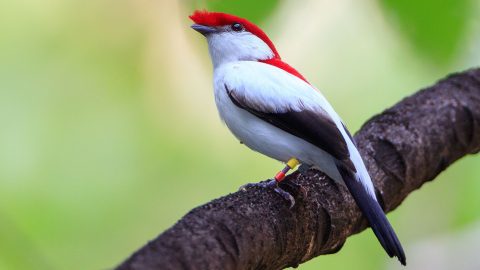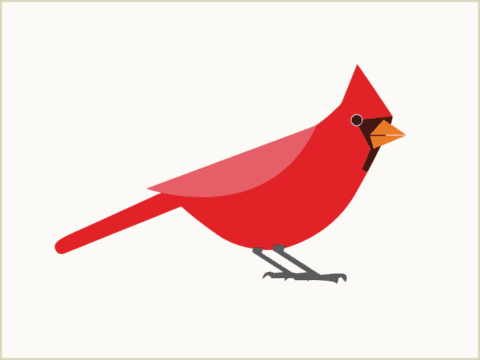Tiny Warbler Leaves South America, Turns Up Outside the Cornell Lab Weeks Later
By Max Witynski
August 14, 2017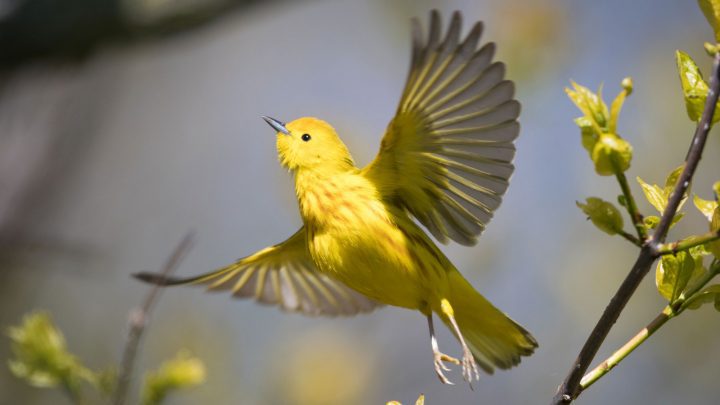
This article also appears in the Spring 2018 issue of Living Bird magazine. Subscribe now.
On June 24, 2017, researchers from the Cornell Lab of Ornithology in Ithaca, New York, caught a Yellow Warbler in their nets. As they prepared to put an identifying band on the bird’s leg, they noticed something very unusual: the bird already had one.
The warbler was a breeding male that had been momentarily interrupted from defending his territory among the short willow trees lining a nearby pond. The last time he’d been caught, just 2 months earlier, he had been fattening up for spring migration—2,300 miles away in northern Colombia, South America. What were the chances of flying one-third of the distance between the equator and the North Pole only to fall into the hands of ornithologists once again?
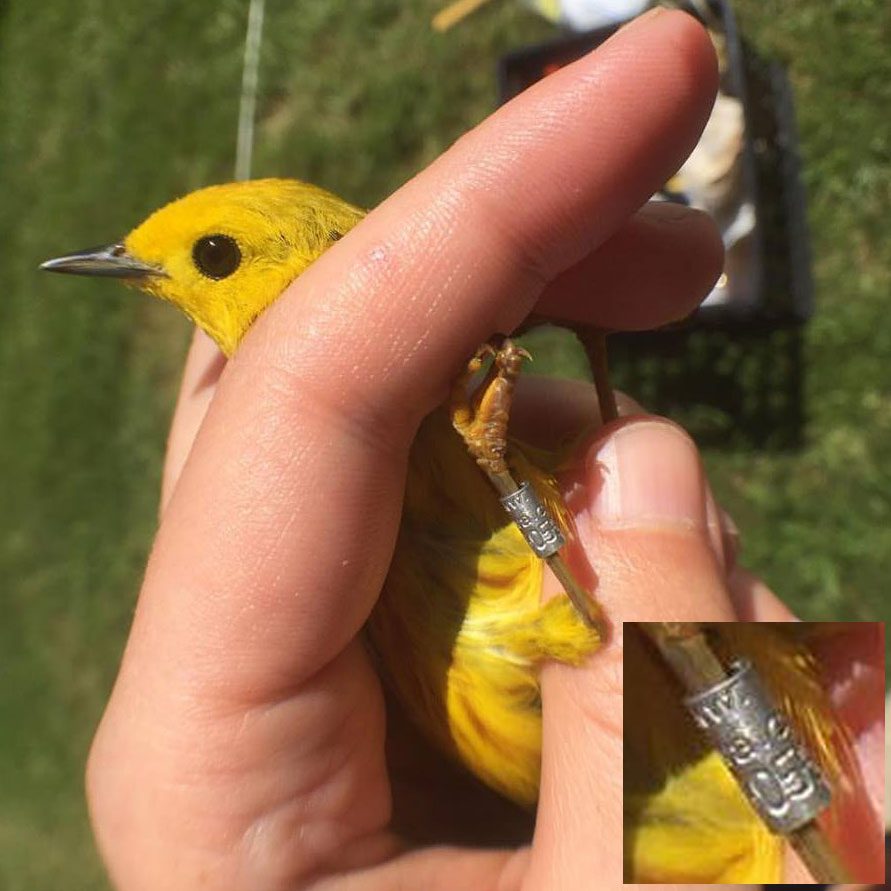
The chances are, in fact, very small, which meant that the researchers (perhaps unlike the bird) were ecstatic. Catching a previously banded bird is almost like winning the lottery—it happens so rarely. This band recovery was the first between North and South America for a Yellow Warbler, despite the fact that more than 130,000 of them have been banded in northeastern North America alone in the last few decades.
The researchers who made this find—David Chang van Oordt, Jenny Uehling, and Teresa Pegan—were ornithology students, like me. Thus I understood the excitement they felt as they held the tiny band in the light and read the numbers printed on it: AA5055. That’s not a sequence used in the U.S., so they immediately knew the bird had been banded in a different country. With a bit of research, they learned the Yellow Warbler had previously been banded on April 13, 2017, at Finca Las Palmeras, Colombia, by a bird study group called SELVA. The group’s records showed that in April, this adult male had lots of fat stored along his breastbone (indicating he was in prime shape for a long migration) and weighed 12.6 g. When captured in New York, he weighed just 10 g. He had lost at least 20% of his body mass during migration.
Having studied Yellow Warbler migration as a Cornell undergraduate myself, I was particularly fascinated by AA5055’s example. The distance he had travelled, and the proportionally enormous change in his body mass as a result, clearly showed just how physically demanding it is to migrate. And yet billions of birds go through trials like AA5055’s every year.
Until recently, no one knew quite where Yellow Warblers from specific populations spent the winter. However, over the past 2 years, I developed a project (which became my undergraduate thesis) that tracked Yellow Warblers between North and South America for the first time. We fitted warblers with tiny devices called geolocators that allowed us to determine where the birds had traveled.
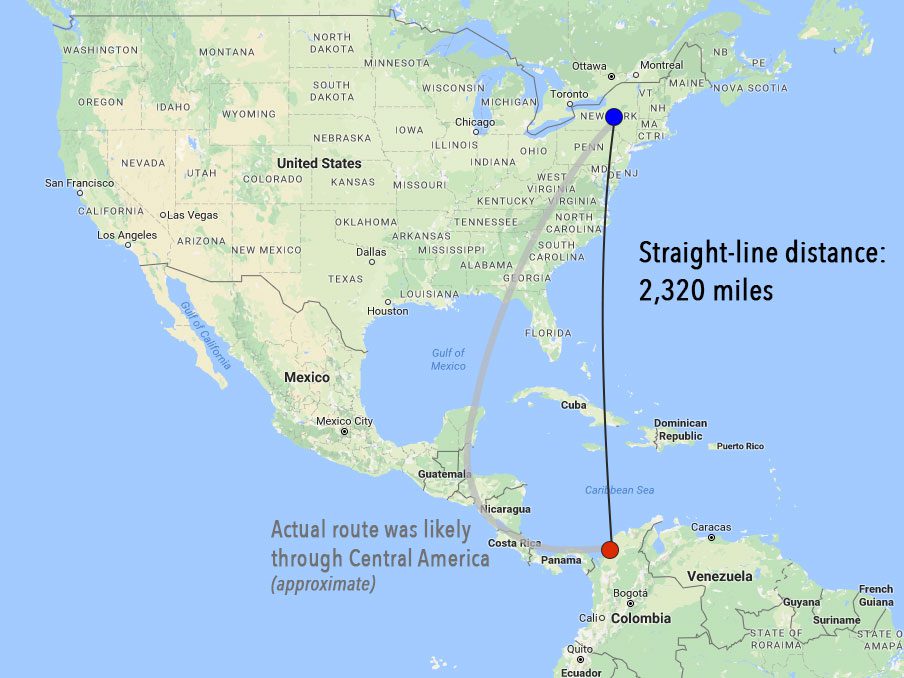
These devices are revolutionizing what scientists know about migration—and our study of Maine and Wisconsin warblers was no exception. Our Maine birds spent the winter in northern Colombia, while Yellow Warblers from Wisconsin went farther east, to Venezuela. In most species, it’s assumed that eastern and western populations migrate parallel to one another, but these birds’ routes crossed over, and the Wisconsin birds ended up wintering east of the Maine birds, which was surprising.
Our geolocator results also helped me imagine the details of AA5055’s impressive journey between Colombia and New York. The birds we tracked on fall migration traveled about 55 miles per day on average, although on some days they moved much faster, traveling as far as 300 miles toward destinations more than 2,000 miles away. The tagged birds didn’t fly in a straight line; they flew circuitous routes that kept them over land as much as possible. On their way south, they visited the forests and coastlines of Florida, Cuba, and the Yucatán Peninsula before swinging east all the way through Central America to their wintering sites in South America.
Spring migration is usually even faster than fall migration as birds race back to get a jump on the breeding season. AA5055’s entire 2,300-mile migration probably took him less than 3 weeks, and likely took him across the Gulf of Mexico in one hop. He faced obstacles as diverse as storms, skyscrapers, cats, and starvation, but somehow he made the journey between the two points in good enough shape to carry on with his life and give a momentary thrill (and some priceless data) to a few biologists. Yellow Warblers live up to 11 years, so in all likelihood AA5055 will make his marathon trip between Colombia and New York a few more times yet—whether anyone catches him again or not.
Max Witynski (’17) majored in Biology and Society at Cornell University. He now lives in Madison, Wisconsin.

All About Birds
is a free resource
Available for everyone,
funded by donors like you
American Kestrel by Blair Dudeck / Macaulay Library
